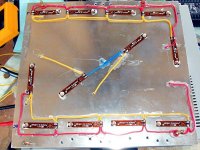billyjojimbob11
Member
Ivy,
Tis what it says, only place I could find Q2 or Q5's
http://www.ledrise.com/product_info...EE-X-RE-Q5-LEDs--960lm--90--176---12-30V.html
But after looking at the retail site
http://www.leds.de/p511/LED_strips_...ine_Plus_warm_white_8_Cree_Q2_LEDs_960lm.html
Now after looking at them closer, I think they are Q2's. Shit! Oh well, hard to find them anyways, 90degrees, no lense needed they ship to US. Bought 2 of em. They also have red OSRAM's already on a strip unless you want to build your own.
I will also add some 5w 660 ledengins as well. This should cover the best leds for growing. We will see.
Thanks for bringing that to my attention.
Tis what it says, only place I could find Q2 or Q5's
http://www.ledrise.com/product_info...EE-X-RE-Q5-LEDs--960lm--90--176---12-30V.html
But after looking at the retail site
http://www.leds.de/p511/LED_strips_...ine_Plus_warm_white_8_Cree_Q2_LEDs_960lm.html
Now after looking at them closer, I think they are Q2's. Shit! Oh well, hard to find them anyways, 90degrees, no lense needed they ship to US. Bought 2 of em. They also have red OSRAM's already on a strip unless you want to build your own.
I will also add some 5w 660 ledengins as well. This should cover the best leds for growing. We will see.
Thanks for bringing that to my attention.





 New one on me.
New one on me.





